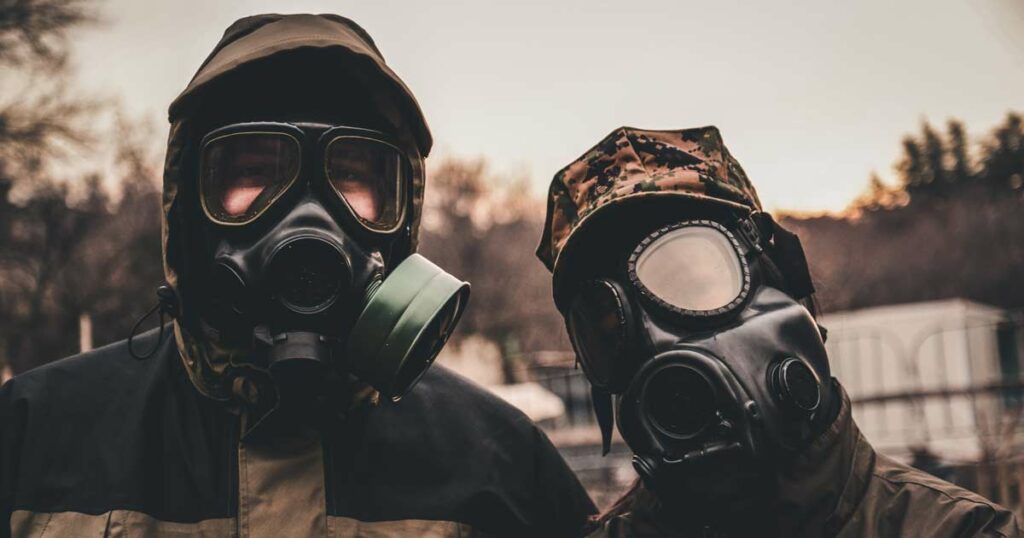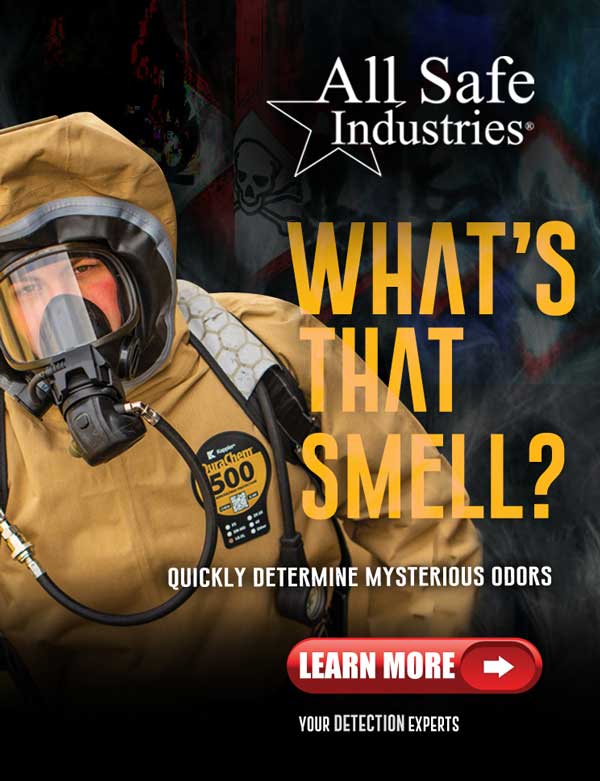This is the second of a three-part series on biological weapons response for hazmat teams
By Kevin Ryan
Part I of this series focused on defining biological weapons, understanding their threat levels and lab safety as well as getting some quick history of these weapons. The next step is to recognize when an attack is occurring.
The most difficult part of a bioweapons attack is recognizing the threat. Bio attacks can be obvious, such as a threat letter with a substance in the envelope. On the other hand, these incidents may not be as easily identified until the health care system renders treatment.
Establishing the scope of an attack will allow you to get the necessary resources needed to mitigate the situation with minimal loss of life. Close coordination with the different arms of emergency response is necessary for a successful outcome.
Also Read: How to Understand the Biological Weapons Threat: Part 1
The key agency involved for any scenario is your local health department. The health department can monitor the health care system to track patients, determine the extent of the problem, provide treatments and alleviate stress on the health care system.
The Center for Disease Control is also a major player in this process. The CDC Electronic Case Reporting(eCR) system is a key piece of patient tracking. Here is the link for the CDC fact sheet on eCR.
Unless symptoms are obvious, recognizing a bioweapons incident is often delayed. Some bio agents have incubation periods lasting several days to weeks. Transmissive agents can be transferred from person to person during that time. Undetected transmissions only increase the scope and size of the attack. It can take weeks to fully recognize the extent of the attack.
Also Read: Ukraine: Threats Prompt Focus on Hazmat Response to Chemical Weapons
Common factors among the patients may be your best clue to determine the source of the contamination. Investigation needs to consider the medical findings, patient tracking and detailed interviews from possible victims.
Once all available information is collected, it can then be evaluated for criminal intent. Criminal intent can be localized, widespread or large-scale. Various bio agents work well for each level of intent.
Category A agents are well suited for a threat of national or international proportions. Anthrax, plague or smallpox if disseminated correctly can create high mortality rates with major public health impacts. Disease outbreaks can be tracked at this website.
Category B agents are best suited for targeted, individual attacks. A toxin such as ricin can be discreetly given to an unsuspecting victim. The assassination of Georgi Markov in September 1978 is the perfect example of this. Here is a summary of the incident at PubMed.gov.
You can see from the summary that the cause was not known until the autopsy was performed several days later.
Several factors determine how effective these attacks would be. Expertise, equipment, facilities and access to agents are some of those factors.
Large-scale attacks need more of all these, so it’s more likely state-sponsored terrorism is the actor. Targeted attacks such as the Markov assassination can require the necessary expertise to be successful. A review of the Shelburne, Vt. ricin attack is in direct contrast to the Markov assassination. The lady in Vermont had very little knowledge from using the internet to build a crude ricin weapon that did not complete the job. The undetermined actor in the Markov hit used a sophisticated weapon made from an umbrella that had a very effective outcome.
Large-scale disseminations can be very complicated and difficult to perform. Aerosolization of the biological agent is the biggest obstacle. That’s because it is necessary to find a method to apply the correct particle size that would infect the human respiratory system. A particle size of 1 to 5 micrometers allows the biological agent to be inhaled deeply into the lungs.
The respiratory system has a series of filters that perform very well and can prevent many biological agents from infecting our bodies. Consider this quick information bit from WebMD on these filters.
Your respiratory system has built-in methods to keep harmful things in the air from entering your lungs. Hairs in your nose help filter out large particles. Tiny hairs, called cilia, along your air passages move in a sweeping motion to keep the passages clean. Cells in your trachea and bronchial tubes make mucus that keeps air passages moist and helps keep things like dust, bacteria and viruses out of your lungs. Skin is also an effective protective mechanism against biological agents. Open cuts and sores are typically the only way an agent can penetrate the skin. And in most healthy individuals the healing process to close those cuts and sores begins almost as soon as the wound is inflicted.
History shows that programs capable of these actions often have been state-sponsored. Japan’s Unit 731 is a good example. As many as 300,000 deaths are attributed to research from Unit 731 during World War II. Information from the experiments were destroyed when the camp was lost, although several scientists were given immunity in exchange for information that they possessed on the testing at Unit 731.
The Japanese cult Aum Shinrikyo provides an interesting case study in the contrast of chemical vs biological weapons. The group attempted 17 chemical and biological weapons attacks from 1990 to 1995. The Monterey International Institute of Studies detailed these attacks and the failures of the biological ones. All of their botox, ebola, and anthrax attempts failed for different reasons owing to the difficulties of a successful bio attack.
Part III will highlight how the Baltimore City Fire Department responds to a suspected biological agent.
About the author
Kevin Ryan is a member of the Baltimore City Fire Department Hazmat Operations Office. He is a 30-year veteran of the fire service with 25 of those years as a hazmat responder; he is currently a Level 3 instructor. He has previously written the Buzz Blog for Hazmat Nation. He can be reached at [email protected] for additional information.
Original post – Copyright © 2022 HazmatNation.com. Externally linked references may hold their own independent copyright not assumed by HazmatNation



